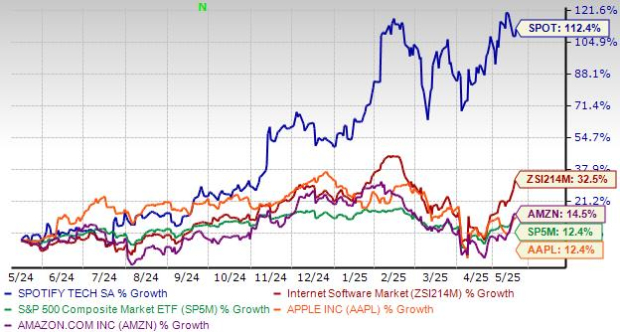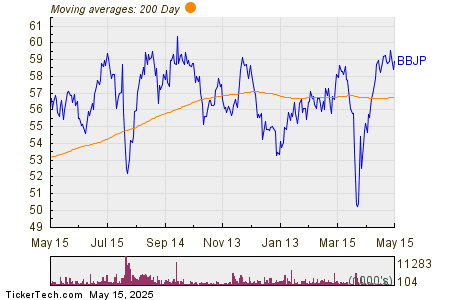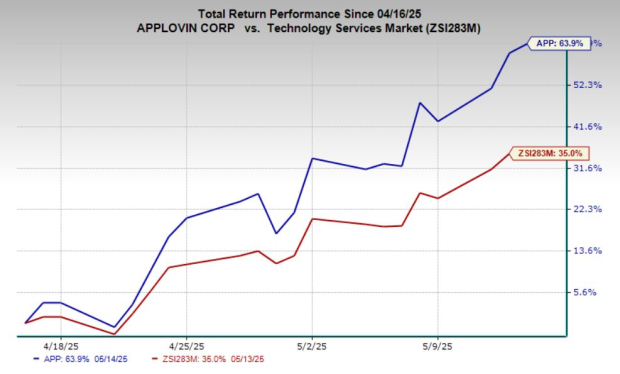Three AI Stocks Analysts Predict Will Decline Significantly
For nearly 30 years, investors have consistently engaged with transformative innovations. As of late 2022, one trend has captured Wall Street’s attention more than others: artificial intelligence (AI).
AI empowers software and systems to make quick decisions autonomously. Importantly, machine learning enables these systems to evolve and acquire new skills over time.
The potential of AI is vast and largely limited only by imagination. Analysts at PwC estimate its global addressable market could reach an astounding $15.7 trillion by 2030 in their report, Sizing the Prize. Such significant figures are likely to draw considerable attention from investors.

Image source: Getty Images.
History, however, warns that not every company riding the wave of a major trend is a worthy investment. While Wall Street analysts generally maintain a positive outlook on AI stocks, dissenting views exist.
Below are three prominent AI stocks that certain analysts anticipate may lose between 65% and 92% of their value.
Tesla: Implied Downside of 92%
The electric vehicle (EV) manufacturer Tesla (NASDAQ: TSLA) faces particularly steep downside potential, according to GLJ Research founder Gordon Johnson. He projects the stock could drop to $24.86 per share.
Johnson arrived at this price target by applying a forward-earnings multiple of 15 and a 9% discount rate to Tesla’s then-current share price. His concerns include increasing global EV competition and declining vehicle deliveries. To manage rising inventory and sluggish demand, Tesla has frequently cut prices across its Model 3, S, X, and Y lines.
Challenges extend beyond Johnson’s assessments. For instance, Tesla’s earnings quality raises questions. Although the company has been profitable for five years, much of its income derives from automotive regulatory credits and interest rather than core operational success.
The company also faces issues related to CEO Elon Musk, whose leadership has been influential but polarizing. Musk’s ambitious promises about robotaxis and full autonomy have yet to be realized, despite being factored into the stock price. Additionally, Tesla is currently valued at an exorbitant 156 times this year’s forecast earnings per share, especially given its projected minimal sales growth in 2025.

Image source: Getty Images.
Palantir Technologies: Implied Downside of 66%
Palantir Technologies (NASDAQ: PLTR) is another AI stock facing potential decline, as noted by RBC Capital Markets analyst Rishi Jaluria. He maintains a price target of $40 per share, indicating a 66% downside from current levels.
Jaluria highlights Palantir’s inflated valuation as a significant concern. While the company deserves some premium for its unique AI-driven software and consistent sales growth, its stock recently surged to over 100 times sales. Historically, leading innovators have peaked at price-to-sales (P/S) ratios of 31 to 43, questioning the sustainability of Palantir’s current valuation.
Moreover, Palantir’s profit-driving Gotham segment is limited by its narrow client base. While the U.S. government is a strong customer, the platform’s accessibility is restricted for many potential users, inhibiting its growth potential and elevating concerns about valuation.
Upstart Holdings: Implied Downside of 65%
The AI-based lending platform Upstart Holdings (NASDAQ: UPST) also faces challenges. Goldman Sachs analyst Michael Ng believes the stock could fall to $16.50 per share, representing a 65% decline from its closing price of over $47 in early May.
In summary, while the hype around artificial intelligence stock can be enticing, potential investors should exercise caution and critically evaluate the underlying fundamentals of the companies involved.
“`html
Upstart Faces Challenges Amid Economic Uncertainty and Interest Rate Changes
Upstart presents a compelling lending model that offers significant advantages over traditional loan processes. Conventional loan vetting often requires extensive paperwork and can take several days or even weeks for approval. In contrast, Upstart’s fully online process utilizes machine learning, allowing for immediate approvals in many cases. Banks and credit unions that partner with Upstart can reduce costs and expand their lending capacity without compromising their credit-risk profile.
However, Upstart faces a critical challenge: its operating model has yet to be tested during a traditional recession, one that isn’t triggered by a pandemic. Typically, during recessions, both consumers and businesses cut back on borrowing, which can lead to increased delinquency rates on existing loans. It remains uncertain whether Upstart’s approach can withstand the pressures of a U.S. economic downturn.
Additionally, Upstart is highly responsive to changes in monetary policy and Treasury bond yields. Lower interest rates often encourage consumers to borrow more. Presently, the Federal Reserve is engaged in a rate-easing cycle, but Treasury bond yields saw their steepest rise in decades in April. This near-term economic uncertainty, along with the potential for increased borrowing costs, creates a challenging outlook for Upstart.
Market Context and Implications
Given these challenges, investors should closely monitor how Upstart adapts to shifting economic conditions. As consumer behavior evolves and borrowing becomes less predictable during recessions, the effectiveness of Upstart’s model will be critical to its long-term viability.
Disclaimer: The opinions expressed here are those of the author and do not reflect Nasdaq, Inc.’s views.
“`





